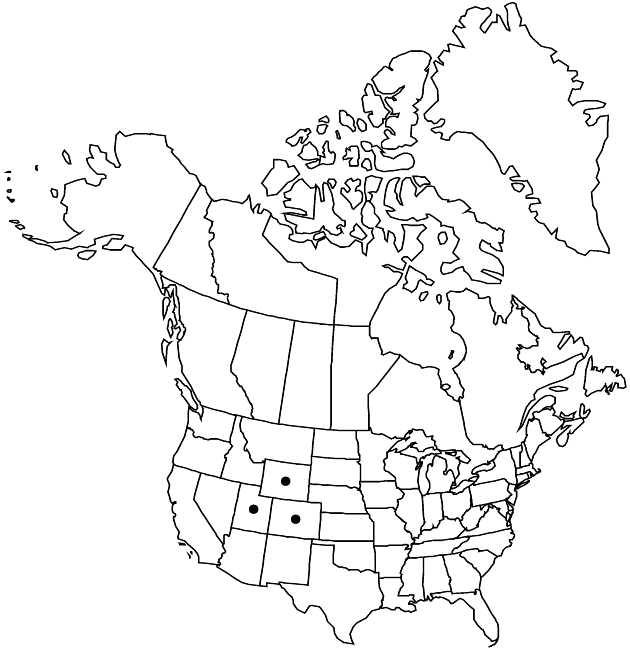Cirsium clavatum
Beih. Bot. Centralbl. 35(2): 310. 1917.
Biennials or monocarpic or polycarpic perennials, 20–100 cm; taproots sometimes with branched caudices. Stems 1–several, erect or ascending, glabrous or thinly arachnoid-tomentose; branches 0–10+, slender, usually arising in distal 1/2, ascending. Leaves: blades oblong to oblanceolate or elliptic, 5–40 × 3–11 cm, unlobed and merely spinulose-dentate or more commonly regularly deeply pinnatifid, lobes well separated to crowded, linear to triangular-ovate, ascending-spreading to retrorse, merely spinulose to coarsely dentate or proximally few-lobed, main spines 2–5(–7) mm, slender, abaxial faces green to gray, glabrous or thinly to densely arachnoid-tomentose, sometimes glabrate, often villous with septate trichomes along veins, adaxial green, glabrous; basal usually present at flowering, sessile or petiolate; principal cauline well distributed, proximal usually winged-petiolate, mid sessile, decurrent as spiny wings 1–3 cm; distal cauline ± reduced. Heads few–many, borne singly or clustered in corymbiform, paniculiform, or racemiform arrays at tips of main stem and branches, sometimes also in distal axils not closely subtended by clustered leafy bracts. Peduncles 0–30 cm. Involucres ovoid to campanulate, 1.5–3 × 1–3 cm, glabrous to thinly arachnoid-tomentose and/or villous-ciliate, with long septate trichomes connecting adjacent phyllaries. Phyllaries in 5–6 series, imbricate or subequal, outer green or with maroon to dark brown subapical patch or appendage, linear to ovate, abaxial faces with narrow glutinous ridge that may be concealed by trichomes; outer and middle with bases appressed, apical appendages erect or ascending, ovate to linear-lanceolate or acicular, entire or spinulose to broadly expanded, scarious, and erose-dentate, apical appendages, spines erect or ascending, 1–5 mm, ± flattened; apices of inner sometimes flexuous or reflexed, narrow, flat, entire or ± expanded, scarious and lacerate-dentate. Corollas creamy white to pale pinkish, 16–20 mm, tubes 6.5–9 mm, throats 4–7.5 mm, lobes 4–6 mm; style tips 3.5–5 mm. Cypselae tan to dark brown, 5–6 mm, apical collars not or scarcely differentiated; pappi 14–16 mm.
Distribution

Colo., Utah, Wyo., Central Rocky Mountains.
Discussion
Varieties 3 (3 in the flora).
Cirsium clavatum is a polymorphic and variable species.
Selected References
None.
Lower Taxa
Key
| 1 | Involucres densely villous or tomentose with long, septate trichomes connecting adjacent phyllaries | Cirsium clavatum var. osterhoutii |
| 1 | Involucres glabrous or thinly arachnoid-tomentose with fine, non-septate trichomes | > 2 |
| 2 | Some or all of the phyllaries usually with dilated, scarious, erose to fringed appendages; mostly Colorado and Wyoming | Cirsium clavatum var. americanum |
| 2 | Phyllaries usually entire; w Colorado and Utah | Cirsium clavatum var. clavatum |